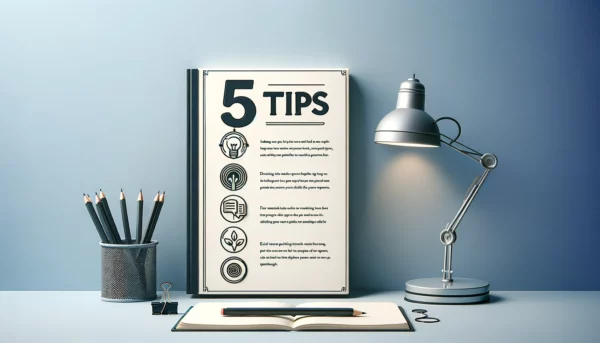Ever wondered why The Great Gatsby’s green light lingers in your mind or why the Yellow Brick Road feels so much more than just a path? These memorable details and symbols aren’t random—they’re motifs, and they’re the secret weapon behind some of the most powerful stories in literature.
So, what exactly is a motif? It’s like a literary breadcrumb trail, subtly guiding readers toward a story’s deeper meaning. Whether it’s the ominous blood stains in Shakespeare’s Macbeth or the color green symbolizing envy and ambition, motifs are everywhere, quietly working to hold the reader’s attention and enrich the narrative.
Understanding how motifs and other symbols in literature work can completely change how you read—and how you write. Recognizing these patterns not only reveals the symbolic significance of certain images or ideas but also teaches you how to weave powerful, recurring elements into your own stories.
In this article, we’ll explore famous motif examples, break down how motifs reinforce themes, and show you how to incorporate them into your own writing to capture your readers’ attention. Ready to unlock the secret behind unforgettable storytelling?
The Motif: A Simple Yet Powerful Literary Device
Let’s break it down: a motif is by definition a recurring element—an idea, image, symbol, or phrase—that appears throughout a story to reinforce its major theme. Think of it as the story’s heartbeat, quietly pulsing beneath the plot to give it depth and meaning.
But wait—how is a motif different from a symbol or a theme? It’s easy to mix them up, so here’s a simple definition for each:
- A theme is the big idea or message of the story (e.g., the corrupting power of wealth).
- A symbol is a tangible object that represents something abstract (e.g., the green light in The Great Gatsby symbolizes Gatsby’s unreachable dreams).
- A motif is a repeated element that emphasizes the theme (e.g., repeated imagery of wealth and extravagance throughout The Great Gatsby highlights the story’s critique of the American Dream).
The word motif itself comes from the French word “motif,” meaning a “pattern” or “theme.” Much like a pattern made in fabric, literary motifs weave through a story, creating layers of meaning and adding symbolic significance.
Whether it’s the constant appearance of shadows in a horror novel or recurring mentions of shattered glass in a thriller, motifs work quietly but powerfully to support the story’s core message. Understanding this subtle device can elevate how you read—and how you write.
How Motifs Reinforce Themes and Captivate Readers
A well-crafted motif does more than just repeat an image or idea—it quietly strengthens a story’s central theme and invites readers to explore its deeper meaning. By weaving recurring elements throughout a narrative, writers can subtly guide the reader’s attention toward larger ideas without spelling them out. This makes stories more immersive and emotionally impactful.
Take the image of shattered glass in a psychological thriller. On the surface, it’s just broken glass. But when it appears repeatedly—perhaps after a character’s mental breakdown or during other moments of high tension—it becomes a powerful motif for fragility, instability, or even a fractured identity. This recurring image reinforces the story’s exploration of vulnerability without directly stating it.
Similarly, in F. Scott Fitzgerald’s novel The Great Gatsby, the recurring image of the green light at the end of Daisy’s dock symbolizes Gatsby’s unreachable dreams and the false promises of the American Dream. The green light subtly draws the reader toward the novel’s larger idea of longing and disillusionment.
Motifs also heighten emotional impact. In Shakespeare’s Macbeth, the recurring blood imagery serves as a constant reminder of guilt and the consequences of unchecked ambition. Each mention of blood reinforces the play’s central theme of moral corruption, making the audience feel Macbeth’s spiraling remorse.
By repeating certain images, symbols, or central ideas, motifs help stories resonate on an emotional and intellectual level. They work in the background, enriching the narrative and ensuring that readers engage more deeply with the story’s themes. A strong motif doesn’t just decorate a story—it reinforces its most important messages.
Famous Motif Examples in Literature (and Why They Work)
Great stories don’t just tell you what to think—they show you through carefully chosen images and ideas. That’s where motifs shine. Let’s explore some examples of the most iconic motifs in literature and why they’re so effective at reinforcing larger themes.
1. The Green Light in The Great Gatsby by F. Scott Fitzgerald
Arguably one of the most famous literary motifs, seeing the green light at the end of Daisy Buchanan’s dock is more than just a distant glow—it’s a beacon of Gatsby’s unreachable dreams. This widely-known motif in literature symbolizes Gatsby’s obsessive desire for wealth, status, and lost love, all wrapped into the elusive American Dream. The symbolic significance of the green light deepens the novel’s exploration of longing, disillusionment, and the idea that some dreams are forever out of reach. Fitzgerald’s use of this simple yet powerful image ties directly into the story’s larger themes of aspiration and decay.
2. Fire and Ice in Jane Eyre by Charlotte Brontë
In Jane Eyre, fire and ice frequently appear to represent the protagonist’s internal struggle between passion and restraint. Fire symbolizes Jane’s fiery independence, love, and anger, while ice reflects coldness, repression, and isolation. These contrasting motifs highlight Jane’s emotional battles and the tension between desire and societal expectations. Brontë masterfully uses these elements to underscore the novel’s larger themes of love, autonomy, and moral integrity.
3. Blood in Macbeth by William Shakespeare
Few motifs are as chillingly effective as the blood imagery in Shakespeare’s Macbeth. After committing murder, Macbeth and Lady Macbeth become consumed by the idea that they cannot wash the blood (and their guilt) from their hands. Phrases like “Out, damned spot!” show how the symbolic significance of blood evolves from representing physical violence to embodying psychological torment. This motif powerfully reinforces the play’s larger themes of guilt, ambition, and moral decay.
4. The Yellow Brick Road in The Wizard of Oz
The Yellow Brick Road is more than a colorful path—it’s a symbol of the journey toward self-discovery and personal growth. Dorothy’s travels along this winding road mirror her emotional and intellectual development. Each twist and turn represents challenges and lessons, making this motif a perfect vehicle for exploring the story’s larger themes of courage, friendship, and the search for identity.
5. Shattered Glass in Psychological Thrillers
In many psychological thrillers, shattered glass recurs as a motif for broken minds, fractured realities, or unstable situations. When a mirror cracks or a window shatters during pivotal moments, it often symbolizes a character’s mental breakdown or a distorted perception of truth. This motif effectively amplifies tension and aligns with the genre’s larger themes of identity, trust, and deception.
Why These Motifs Work
What makes these motif examples so impactful is their ability to subtly deepen a story’s meaning without overshadowing the plot. Whether it’s the haunting blood in Macbeth or the glowing green light in The Great Gatsby, these motifs work because they are carefully woven into the narrative, reinforcing the story’s central themes and evoking emotional responses. Their symbolic significance lets readers understand and engage with the story on multiple levels, making the experience more profound and memorable.
By understanding how these iconic motifs function, writers can learn how to craft their own recurring elements that not only captivate readers but also elevate their own way of storytelling to new heights.
How to Incorporate Motifs into Your Own Writing
Incorporating motifs into your own writing can transform a good story into an unforgettable one. A well-placed recurring element adds depth, reinforces the central theme, and gives your whole novel or short story layers of symbolic significance. Here’s how to do it effectively:
1. Start with Your Central Theme
Before adding any motif, identify the abstract idea you want to explore. Is your story about freedom, power, identity, or maybe the consequences of unchecked ambition? Your central theme is the foundation that your motif will reinforce. For example, if your novel or short story centers on the theme of freedom, you might choose a symbol that captures that feeling—like open skies or caged birds.
2. Choose a Symbolic or Tangible Motif
Once you have your theme, select a motif that complements it. This can be something symbolic or something more tangible. For example:
- Color Green → Can symbolize freedom, envy, or growth.
- Shattered Glass → Represents a fractured mind or a broken relationship.
- A Locked Door → Could symbolize secrets, isolation, or a desire for escape.
Choose something that feels natural within your story’s world and has the potential to take on a larger meaning as the narrative unfolds.
3. Weave It Naturally into the Narrative
A strong motif should appear at key moments in the story, not be awkwardly wedged in. Introduce the motif early and allow it to evolve as the plot progresses. For example, if your story is about a character struggling with identity, a mirror could appear during moments of self-doubt or transformation. Be subtle—let the motif support the story, not overshadow it.
4. Use Recurrence for Impact (But Vary It)
The power of a motif comes from its repetition. However, simply repeating the same image can get stale. Instead, vary how the motif appears to reflect the main character’s journey or emotional state. A wilted flower might symbolize fading hope early on but bloom again as the character regains strength. This keeps the motif fresh while still reinforcing the central theme.
Pro Tip: Don’t just toss in a serial killer’s favorite object or a random symbol for flair. Every motif should serve a purpose—highlighting the story’s major theme, deepening a character, or enhancing the atmosphere. If it doesn’t reinforce the larger motif or theme, it’s just decoration.
By thoughtfully weaving motifs into your writing, you can create stories that resonate with readers and leave a lasting impact.
Common Motifs and What They Symbolize
Writers have long used main motifs to add depth and meaning to their stories. These recurring elements often symbolize universal ideas, guiding readers toward a particular story with deeper themes. Let’s explore some of the most common motifs in literature and what they represent.
Light vs. Darkness
One of the oldest literary motifs, light and darkness often symbolize the battle between good versus evil or knowledge versus ignorance. Light represents truth, hope, and purity, while darkness suggests deceit, danger, death, or moral corruption. This contrast is a powerful tool for highlighting the characters’ struggles and moral dilemmas.
Colors
Colors carry rich symbolic significance in literature:
- Green: Symbolizes freedom, envy, or unattainable dreams (The Great Gatsby).
- Red: Represents passion, love, or danger.
- Blue: Often symbolizes calm, sadness, or loyalty.
The careful use of color can reinforce a story’s larger motif and evoke emotional responses from readers.
Journeys
The motif of a journey—whether physical or emotional—often symbolizes personal growth or self-discovery. Dorothy’s path along the Yellow Brick Road reflects her transformation and search for identity, a journey that resonates with readers on many levels.
Mirrors and Reflections
Mirrors symbolize themes of identity, self-awareness, and the contrast between truth and illusion. They often appear in stories where characters struggle with their sense of self or face uncomfortable truths.
Seasons
The changing seasons reflect the natural life cycle:
- Spring → Birth and new beginnings.
- Summer → Youth and vitality.
- Autumn → Decline and change.
- Winter → Death or dormancy.
Using specific images like seasons allows writers to subtly emphasize themes of time, change, and mortality.
By weaving these timeless motifs into their narratives, writers can create stories with larger themes that resonate deeply with readers.
Mastering Motifs in Your Writing
Recognizing and crafting motifs is a powerful way to elevate your own writing. By weaving meaningful, recurring elements into your story, you can emphasize larger themes, deepen your characters, and create a more engaging and memorable narrative. Whether it’s a subtle symbol or a bold image, the right motif can transform a simple story into something truly unforgettable.
Don’t be afraid to experiment—find motifs that naturally align with your story’s core ideas and let them evolve alongside your characters. Who knows? The next iconic literary motif could be yours.
Ready to bring your story to life? Spines can help you structure your ideas, develop themes, and create compelling narratives that captivate readers. Start crafting stories that resonate—try Spines today!
Start Your Publishing Journey FOR FREEQ: What is a motif in literature?
A motif is a recurring element in a story, such as an image, symbol, or idea, that reinforces the theme. Unlike themes, which are broader messages, motifs are specific and repetitive throughout the narrative. For example, in Macbeth, the recurring motif of blood symbolizes guilt and murder, reinforcing the play’s central theme of ambition and its consequences.
Q: What is a good example of a motif?
A good example of a motif is the green light in The Great Gatsby, symbolizing Gatsby’s unreachable dreams and the illusion of the American Dream. Another example is the mockingbird in To Kill a Mockingbird, representing innocence and the injustice of harming the innocent. These motifs appear repeatedly, deepening the reader’s understanding of the story’s themes.
Q: What are the most common motifs in literature?
Some of the most common motifs in literature include:
- Light vs. Darkness – Representing knowledge vs. ignorance (e.g., Frankenstein).
- Weather – Storms symbolizing turmoil, sunshine symbolizing hope.
- Mirrors and Reflections – Exploring identity and self-perception.
- Journey or Quest – Found in adventure stories like The Lord of the Rings.
- Dreams and Visions – Representing foreshadowing or hidden truths (Of Mice and Men).
Q: What is the difference between a motif and a theme?
A theme is the central idea of a story, while a motif is a recurring symbol, concept, or image that reinforces the theme. For example, in Romeo and Juliet, the theme is love and fate, while the motif of stars emphasizes the idea that their love is doomed by destiny.
Q: How do you find the motif of a story?
To identify a motif, look for repeated symbols, images, or phrases throughout the story. Pay attention to patterns in setting, objects, and dialogue that appear multiple times and seem to reinforce a key idea. For example, in Harry Potter, the motif of the scar represents Harry’s connection to Voldemort and his painful past.
Q: What are some famous motifs in literature?
Some well-known motifs in literature include:
- The Green Light (The Great Gatsby) – Symbolizing unattainable dreams.
- Blood (Macbeth) – Representing guilt and violence.
- Birds (Jane Eyre) – Symbolizing freedom and entrapment.
- Hands and Gloves (Of Mice and Men) – Reflecting power and control.
Q: How do you write a strong motif in a story?
To create a compelling motif, follow these steps:
- Identify your theme – What central idea do you want to reinforce?
- Choose a symbol or repeated element – A word, object, or phrase that aligns with your theme.
- Integrate it naturally – Repeat it throughout the story in different contexts.
- Ensure it evolves – A strong motif gains deeper meaning as the story progresses.
For example, if your theme is freedom, you might use birds as a motif, showing them caged at the start but flying free by the end.









